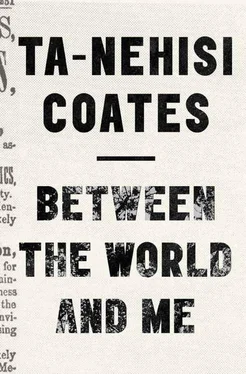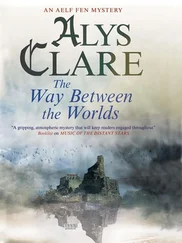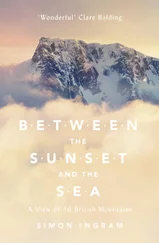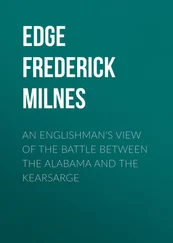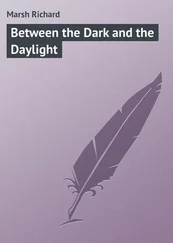And I knew that there were children born into these same caged neighborhoods on the Westside, these ghettos, each of which was as planned as any subdivision. They are an elegant act of racism, killing fields authored by federal policies, where we are, all again, plundered of our dignity, of our families, of our wealth, and of our lives. And there is no difference between the killing of Prince Jones and the murders attending these killing fields because both are rooted in the assumed inhumanity of black people. A legacy of plunder, a network of laws and traditions, a heritage, a Dream, murdered Prince Jones as sure as it murders black people in North Lawndale with frightening regularity. “Black-on-black crime” is jargon, violence to language, which vanishes the men who engineered the covenants, who fixed the loans, who planned the projects, who built the streets and sold red ink by the barrel. And this should not surprise us. The plunder of black life was drilled into this country in its infancy and reinforced across its history, so that plunder has become an heirloom, an intelligence, a sentience, a default setting to which, likely to the end of our days, we must invariably return.
The killing fields of Chicago, of Baltimore, of Detroit, were created by the policy of Dreamers, but their weight, their shame, rests solely upon those who are dying in them. There is a great deception in this. To yell “black-on-black crime” is to shoot a man and then shame him for bleeding. And the premise that allows for these killing fields — the reduction of the black body — is no different than the premise that allowed for the murder of Prince Jones. The Dream of acting white, of talking white, of being white, murdered Prince Jones as sure as it murders black people in Chicago with frightening regularity. Do not accept the lie. Do not drink from poison. The same hands that drew red lines around the life of Prince Jones drew red lines around the ghetto.
—
I did not want to raise you in fear or false memory. I did not want you forced to mask your joys and bind your eyes. What I wanted for you was to grow into consciousness. I resolved to hide nothing from you.
Do you remember when I first took you to work, when you were thirteen? I was going to see the mother of a dead black boy. The boy had exchanged hard words with a white man and been killed, because he refused to turn down his music. The killer, having emptied his gun, drove his girlfriend to a hotel. They had drinks. They ordered a pizza. And then the next day, at his leisure, the man turned himself in. The man claimed to have seen a shotgun. He claimed to have been in fear for his life and to only have triumphed through righteous violence. “I was the victim and the victor,” he asserted, much as generations of American plunderers had asserted before. No shotgun was ever found. The claim still influenced the jury, and the killer was convicted not of the boy’s murder but of firing repeatedly as the boy’s friends tried to retreat. Destroying the black body was permissible — but it would be better to do it efficiently.
The mother of this murdered black boy was then taking her case before journalists and writers. We met her in the lobby of her Times Square hotel. She was medium height with brown skin and hair down to her shoulders. It had not even been a week since the verdict. But she was composed and wholly self-possessed. She did not rage at the killer but wondered aloud if the rules she’d imparted had been enough. She had wanted her son to stand for what he believed and to be respectful. And he had died for believing his friends had a right to play their music loud, to be American teenagers. Still, she was left wondering. “In my mind I keep saying, ‘Had he not spoke back, spoke up, would he still be here?’ ”
She would not forget the uniqueness of her son, his singular life. She would not forget that he had a father who loved him, who took him in while she battled cancer. She would not forget that he was the life of the party, that he always had new friends for her to shuttle around in her minivan. And she would have him live on in her work. I told her the verdict angered me. I told her that the idea that someone on that jury thought it plausible there was a gun in the car baffled the mind. She said that she was baffled too, and that I should not mistake her calm probing for the absence of anger. But God had focused her anger away from revenge and toward redemption, she said. God had spoken to her and committed her to a new activism. Then the mother of the murdered boy rose, turned to you, and said, “You exist. You matter. You have value. You have every right to wear your hoodie, to play your music as loud as you want. You have every right to be you. And no one should deter you from being you. You have to be you. And you can never be afraid to be you.”
I was glad she said this. I have tried to say the same to you, and if I have not said it with the same direction and clarity, I confess that is because I am afraid. And I have no God to hold me up. And I believe that when they shatter the body they shatter everything, and I knew that all of us — Christians, Muslims, atheists — lived in this fear of this truth. Disembodiment is a kind of terrorism, and the threat of it alters the orbit of all our lives and, like terrorism, this distortion is intentional. Disembodiment. The dragon that compelled the boys I knew, way back, into extravagant theater of ownership. Disembodiment. The demon that pushed the middle-class black survivors into aggressive passivity, our conversation restrained in public quarters, our best manners on display, our hands never out of pockets, our whole manner ordered as if to say, “I make no sudden moves.” Disembodiment. The serpent of school years, demanding I be twice as good, though I was but a boy. Murder was all around us and we knew, deep in ourselves, in some silent space, that the author of these murders was beyond us, that it suited some other person’s ends. We were right.
—
Here is how I take the measure of my progress in life: I imagine myself as I was, back there in West Baltimore, dodging North and Pulaski, ducking Murphy Homes, fearful of the schools and the streets, and I imagine showing that lost boy a portrait of my present life and asking him what he would make of it. Only once — in the two years after your birth, in the first two rounds of the fight of my life — have I believed he would have been disappointed. I write you at the precipice of my fortieth year, having come to a point in my life — not of great prominence — but far beyond anything that boy could have even imagined. I did not master the streets, because I could not read the body language quick enough. I did not master the schools, because I could not see where any of it could possibly lead. But I did not fall. I have my family. I have my work. I no longer feel it necessary to hang my head at parties and tell people that I am “trying to be a writer.” And godless though I am, the fact of being human, the fact of possessing the gift of study, and thus being remarkable among all the matter floating through the cosmos, still awes me.
I have spent much of my studies searching for the right question by which I might fully understand the breach between the world and me. I have not spent my time studying the problem of “race”—“race” itself is just a restatement and retrenchment of the problem. You see this from time to time when some dullard — usually believing himself white — proposes that the way forward is a grand orgy of black and white, ending only when we are all beige and thus the same “race.” But a great number of “black” people already are beige. And the history of civilization is littered with dead “races” (Frankish, Italian, German, Irish) later abandoned because they no longer serve their purpose — the organization of people beneath, and beyond, the umbrella of rights.
Читать дальше
